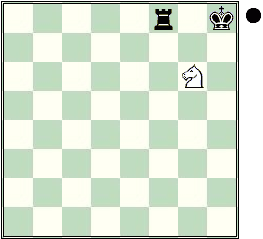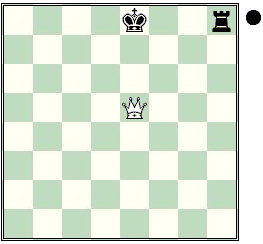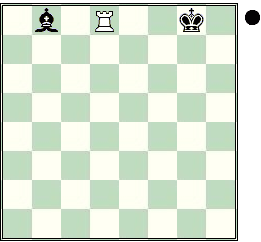In the previous lessons you have learned to attack and to defend, but if your opponent always defends the pieces you are attacking then it will never be possible to capture a piece unless it becomes impossible to defend all attacked pieces or more precisely to defend all attacked targets. The twofold attack is one of the possibilities to accomplish this as we have seen in one of the previous lessons. Another possibility to assure that your opponent is unable to defend all the attacked targets is the double attack. This will be the main focus of this second series of lessons.
A double attack is a move that attacks two targets at the same time. If the resulting attacks (of this move) are made by the same piece it is called a fork.
 | The Knight fork The Knight is Knights probably the piece that is most often used for a fork. It is easy for the Knight to attack two pieces without being attacked at the same time. An example of a Knight fork is given in the diagram at the left. The King is in check and has to move enabling the Knight to capture the Rook on the next move. | |
 | The Queen fork Another piece that is often involved in these double attacks is the Queen. It is often rather easy to find a square from which the Queen attacks two other pieces. Note however that the Queen will probably be more valuable than the attacked pieces that therefor have to be undefended to gain a material advantage. | |
 | The pawn fork Even a pawn can attack two pieces at the same time and since in a normal situation the pawn is not as valuable as the attacked pieces it doesn’t matter that the attacked pieces are defended. For example in the diagram on the left the Rook is defending the Knight and remains a defender after moving the Rook to g5. | |
 | The Bishop fork In general the attacked pieces have to be more valuable or have to be undefended for a successful double attack. In addition the attacked pieces should not be able to capture the attacking piece unless this is defended and less valuable. Therefor most of the time a Bishop fork is aimed at a combination of the King, a loose Knight, a Rook and the queen if the bishop is protected. | |
 | The Rook fork The double attack with the Rook is rather easy to see but is often overlooked, because it occurs less frequent. The Rook is a very valuable piece, but the number of possibilities for a double attack are the same as with the Bishop. | |
 | Another fork The diagram on the left illustrates that there is also another possibility for a fork: A King fork. This is such a rare fork that it is not even mentioned in most chess books. Note that the fork in the diagram isn’t even working when the Rook is on the other side of the Bishop. Then the Rook can move to the right still defending the Bishop. |
You may want to continue with the lesson about the different kind of targets of the Queen Fork or the lesson about the Knight fork.

Post a Comment